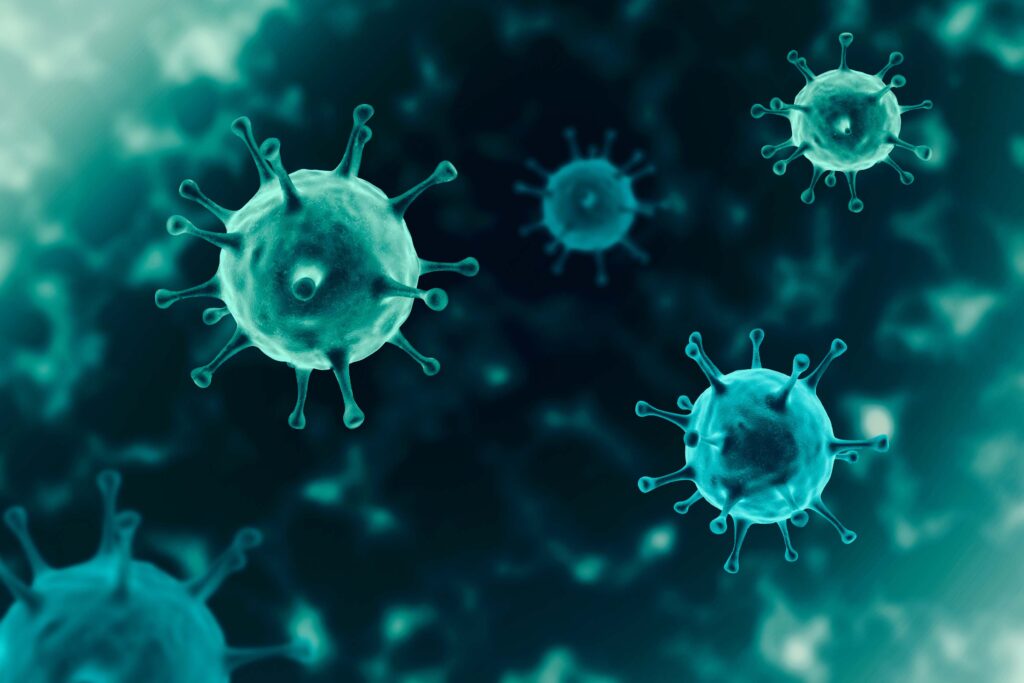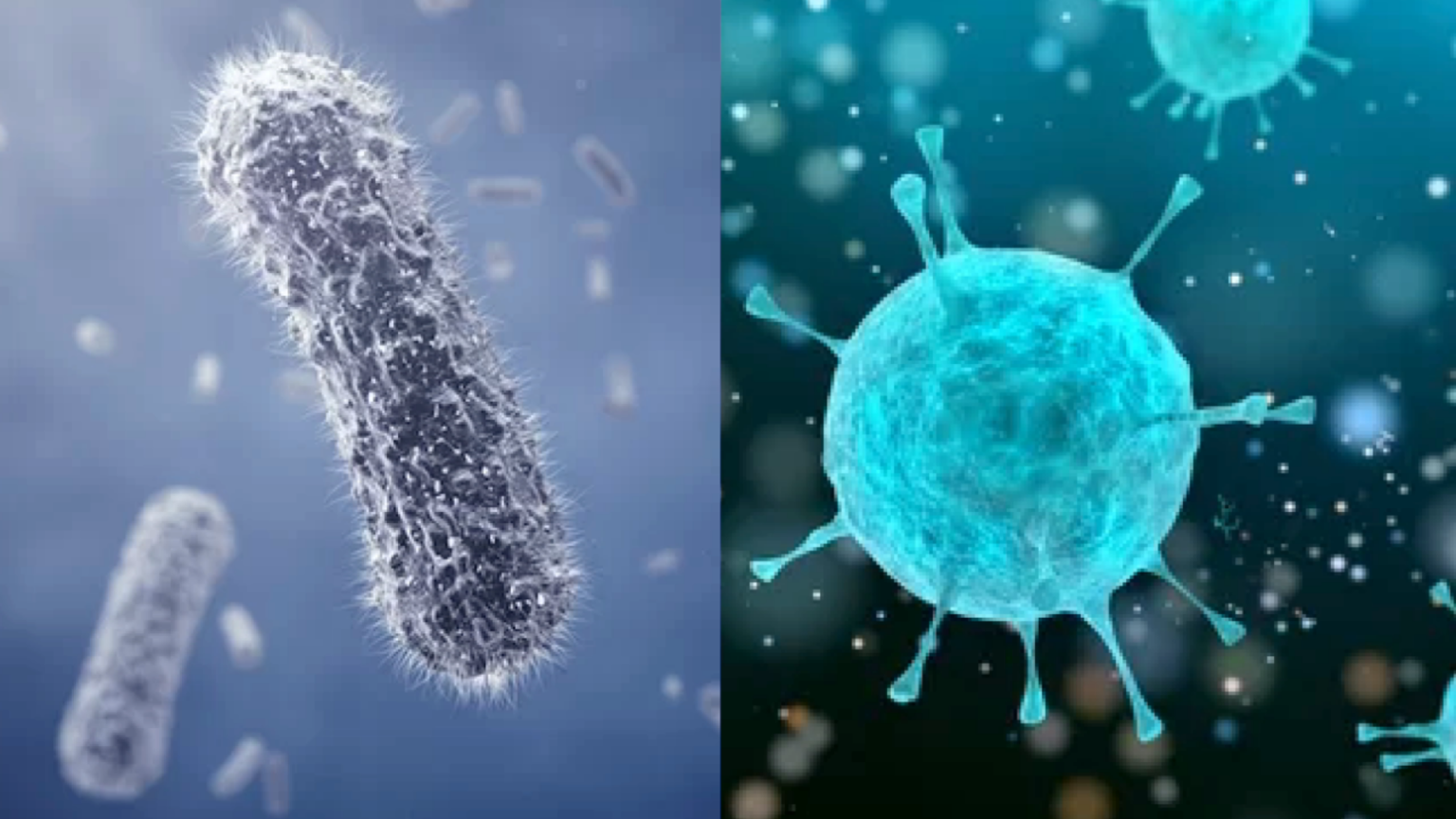Throughout microbiology, viruses and bacteria are the two major groups of the pathological agents responsible for diseases, although they obviously have enormous differences in structure, ways of replication, and how they interact with their host. Knowledge of the difference between them is what is needed to make a proper diagnosis of infections, formulation of treatment, and carrying out preventive measures. The following detailed discussion brings into light the main differences between viruses and bacteria, which form an individual identity to both the causative agents, shape their life cycles, and impact on health.
1. Basic Structure
Viruses
Viruses are little lives at the border of life. Enclosed within the protection of a casing protein layer, a central molecule of genetic material is in the form of either DNA or RNA. Some are surrounded by an external lipid envelope that originates from the host cell membrane. Lacking the cellular structures and machinery to conduct metabolic and reproduction processes, hence they are obligate intracellular parasites. They are incapable of carrying out any functions pertaining to life by themselves; hence, they will have to invade cells in order to replicate.

- Identification Criteria:
- Genetic Material: Either DNA or RNA, but not both.
- Capsid: A protein wrapping enclosed around the genetic material.
- Envelope: Type of sometimes existing additional outermost lipid layer which covers the host cell’s membrane.
Bacteria
Bacteria, in contrast to viruses, are single-celled organisms of complex strata, which have a cell wall for support and protection, a cell or plasma membrane, cytoplasm, and often a nucleoid region wherein the DNA is localized. Unlike viruses, bacteria can replicate themselves by themselves. They are fully equipped with cellular machinery to either conduct metabolism, grow, and reproduce.
Key Features:
- Genetic Material: DNA, inside a single circular chromosome.
- Cell Wall: The functioning support and structure.
- Cell Membrane: It controls the transport of the substance.
- Cytoplasm: It contains cell organelles and is the site of metabolic activities of the cell.
2. Duplication and Life Cycle
Viruses
Viruses are totally dependent on a host for duplication. The general sign of the life cycle in viruses can be a series of two parts:
a. Attachment: the virus attaches to specific receptors of the host cell.
b. Entry: The virus or its genetic material gains entry into the host cell either directly, through the route of endocytosis, or by fusion with the host cell membrane.
c. Replication and Transcription: The viral genetic material takes over the host cell machinery and begins the process of genome replication and mRNA transcription.
d. Assembly: The new viral particles are the replicated genetic material and proteins.
e. Release: These new viruses are released from the host cell – most of the time by host cell death – and infect other cells.
Bacteria
Bacteria reproduce in a manner called binary fission. This technique involves a series of steps that follow this order:
a. DNA Replication: Bacterial DNA replicates itself in identical fashion.
b. Cell Growth: The cell grows bigger.
c. Cell Division: The cell membrane and wall constrict and the cell divides into two identical daughter cells; each comprises a copy of the DNA.
Bacteria, however, may also exchange genetic material via conjugation, transformation, and transduction in ways that add diversity and adaptability to its gene pool.
3. Treatment and Prevention
Viruses
Treatment of viral infection is mostly made up of antiviral drugs, which target phases of the viral cycle during the entry, replication, or assembly phase. Vaccination will be very important in preventing viral infections as this jump-starts the immune system to recognize specific viruses and fight them. Common antiviral drugs include those targeted against influenza, HIV, and herpes viruses.
Complications:
- Mutation Rate: Mutation rate with viruses is very high; hence this may result in resistant strains.
- Antibiotic Ineffectiveness: It majorly focuses on bacterial processes but weak for fighting viruses.
Most of the bacterial infectious diseases can be treated with certain antibiotics. They possess particular targets on the various structures or functions of bacterial cells, such as cell wall synthesis, protein synthesis, or DNA replication. For example, penicillin, tetracyclines, and macrolides are good antibiotics. Some of the successfully made vaccines are the vaccines against the bacteria causing tuberculosis and diphtheria.
- Antibiotic Resistance: Overconsumption and misuse can create antibiotic resistance, meaning that resistant strains of bacteria are developed, and infections do not respond to antibiotics.
- Variety of Bacterial Species: The types of different varieties of bacterial species require specific treatments.
4. Infections and Diseases
Viral Diseases
Some of the illnesses viruses can cause are the common cold, flu, hepatitis, and other deadly diseases such as HIV/AIDS and now COVID-19. Essentially, there are vast differences evident among the viral illnesses themselves regarding symptoms, modes of transmission, and potential outcomes in terms of health.
Examples:
- Influenza: Leads to fever, cough, and myalgia, among other symptoms.
- **: Caused by the attack of the immune system cells.
- COVID-19: Is a respiratory system disease that, in some sever cases, may make one get hospitalized and sometimes may cause death.
Bacterial Diseases
The infections are in most cases caused by bacteria, and may either be mild or life-threatening. Examples include conditions such as strep throat, tuberculosis, and bacterial meningitis. Their severity and treatment rely on the nature of the bacteria in question

Examples:
- Strep Throat: An infection by the sore-causing Streptococcus bacteria in the throat, and the temperature is raised.
- Tuberculosis: An adverse infection in the lungs resulting from invasion by Mycobacterium tuberculosis.
- Bacterial Meningitis: Another excessively severe infection due to a species of bacteria in the protective membranes covering the brain and spinal cord.
5. Summary of Key Differences
Hence, the critical differences between viruses and bacteria are that
- Structure: A virus carries no cellular structures, so it must infect a host cell, while bacteria are single-celled organisms carrying a cell wall and other cellular components.
- Replication: Replication occurs inside living host cells, as the virus acts in that case. Bacteria multiply independently, by the process of binary fission.
- Treatment: Viruses are treated with antiviral drugs and vaccines, while bacterial infections are treated with antibiotics and are also prevented using vaccines.
- Disease Etiology: Viruses and bacteria have different diseases caused, with varied symptoms, modes of transmission, and approaches to treatment.
Conclusion
Also read: The Incredible Process: How Plants Harness Sunlight into Vital Energy
The difference between viruses and bacteria is hugely important in the pursuit of understanding microbiology and combating infectious diseases. It is just its structure and the nature of the replication, which is dependent on the host cell, that makes it fairly easily infect, while the serpentine complexity of the bacterial cell machinery and its capability of self-replication can cause infection quite differently. The knowledge of differences will guide good treatment and prevention strategies, hence shaping focused approaches to fight viral and bacterial infections. The answer to these reservations is simple: basic differences inherent in these two classes of pathogens underlie their differences in roots of function in health and disease and open up totally new ways for improved diagnostics, therapeutics, and preventive measures.
Other sources: This Topic





